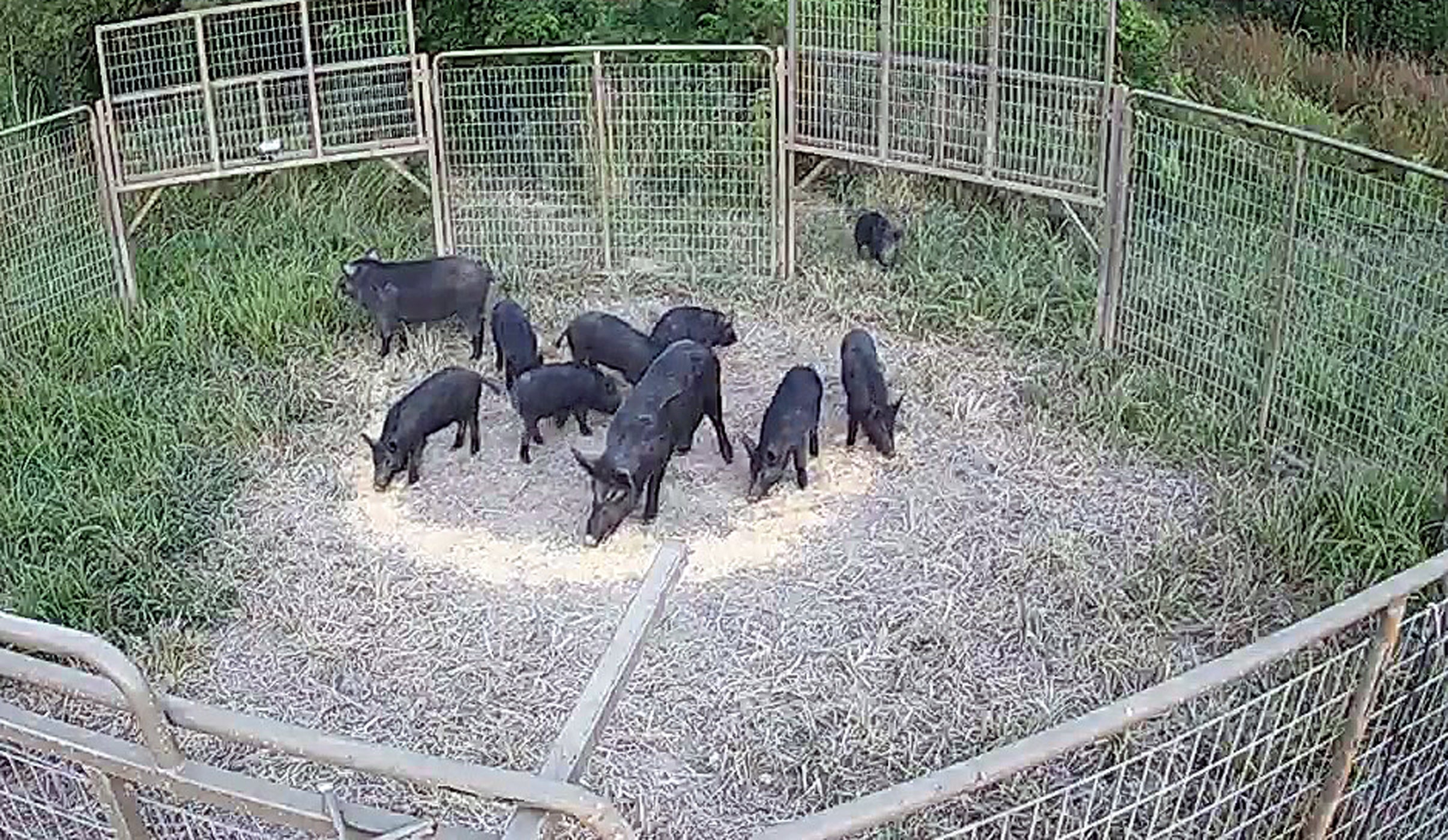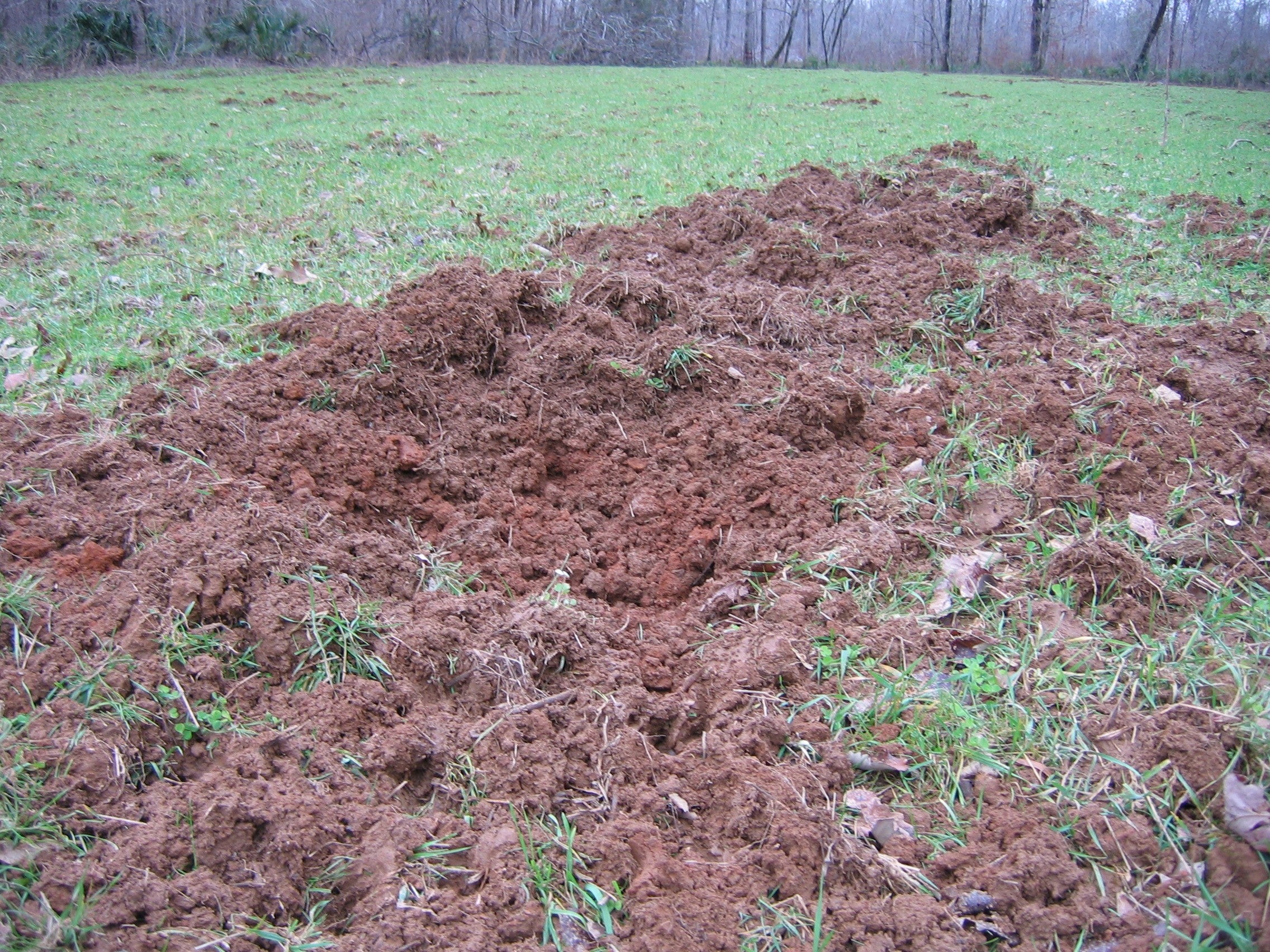By DAVID RAINER, Alabama Department of Conservation and Natural Resources
As the Forever Wild Land Trust (FWLT) is preparing for its first meeting of the year on February 1, 2024, in Montgomery, the FWLT Board of Trustees will be focused on an initiative adopted at its last meeting of 2023 to spend up to $1 million to enhance existing efforts to mitigate the impact of feral hog populations.
Many landowners in Alabama and other states in the Southeast will testify about their struggle with ongoing issues related to feral swine populations. These nuisance feral swine populations can be found in all 67 counties in Alabama.
The Alabama Department of Conservation and Natural Resources’ (ADCNR) State Lands Division, which administers the Forever Wild program, and ADCNR’s Wildlife and Freshwater Fisheries (WFF) Division are in a constant battle to control the feral hog populations on the properties they manage. With no methods currently available to completely eradicate the feral swine populations, ADCNR staff spend a great deal of time and money working to reduce feral hog populations on ADCNR and Forever Wild properties. Several of these properties have adjacent acreages.
State Lands Director Patti McCurdy said the Board passed a motion at the November meeting to authorize the use of up to $1 million of stewardship funds for feral hog control measures.
“The motion passed with the instructions for us to explore any additional practices available to efficiently and effectively mitigate known populations as well as continue efforts to monitor for the emergence of additional nuisance populations and, finally, spend those funds wisely,” McCurdy said. “While management efforts on Forever Wild acreage, as well as the Department’s acreage overall, have been extensive and ongoing, we remain as frustrated as private landowners with just how pervasive and destructive the feral swine populations continue to be.”
During fiscal years 2019 through 2023, those efforts successfully removed more than 5,800 feral swine from ADCNR and Forever Wild properties. During the same period, hunters reported harvesting more than 465 feral swine.
“Just like every private landowner in Alabama has been experiencing, this is an ongoing struggle, and we’re no different,” McCurdy said. “The Board wanted to provide an additional spotlight on this challenging issue and concentrate our efforts on a specific initiative for this year. Forever Wild Board Members are very dedicated to identifying needs and pursuing tract enhancements. Last year, the Board adopted an initiative designed to enhance public access to all Forever Wild properties.”
According to the U.S. Department of Agriculture (USDA), feral hogs cause more than $1.5 billion in damages to property, agricultural interests (crops and livestock), native wildlife and ecosystems each year as well as cultural and historic resources. Estimates show that feral hogs cause $50 million of damage in Alabama annually.
“The damage comes in many forms,” McCurdy said. “On our acreage, many times it is basic ground disturbance causing issues with the wildlife habitat and recreation. The ground disturbance can cause issues with trail maintenance and other areas of recreational use, such as wildlife openings. That impact to the ground as well as habitat is difficult to reverse because it is ongoing. Like cogongrass, you’re looking at perpetual mitigation. Just like private landowners, we have to be prepared that we have a long-term fight on our hands.”
Board member Jimmy Parnell, President and CEO of the Alabama Farmers Federation (ALFA), introduced the feral hog motion after hearing from his constituents.
“I heard from our producers and farmers all across the state that they perceived that Forever Wild land was something of an incubator for wild hogs,” Parnell said. “They said they trap their land and the neighbors’ land, but the hogs keep coming out of Forever Wild land. I’d heard that for a good while and decided we needed to do something. I made the motion to spend up to $1 million and asked Forever Wild to put together a plan. It will be incrementally spent to figure out ways to deal with this. I don’t know that you will ever eliminate hogs on Forever Wild land, but you can sure reduce the population.
“I personally prefer to use professional trappers or eradicators. I think that’s the sure-fire way to get rid of hogs. We run into this with farmers. It’s fun for a little while, but a lot of them get tired of it after a few weeks. You need somebody who’s on it every day, not just for the sport of hunting the hogs.”
Parnell does expect the Forever Wild budget in the future will contain a feral hog mitigation component.
“I think this is a good start, and my guess is there will be some appropriation for this each year,” he said. “The funds are there. We have funds for maintenance. In my mind, this is to maintain that land.”









